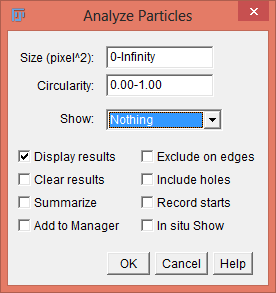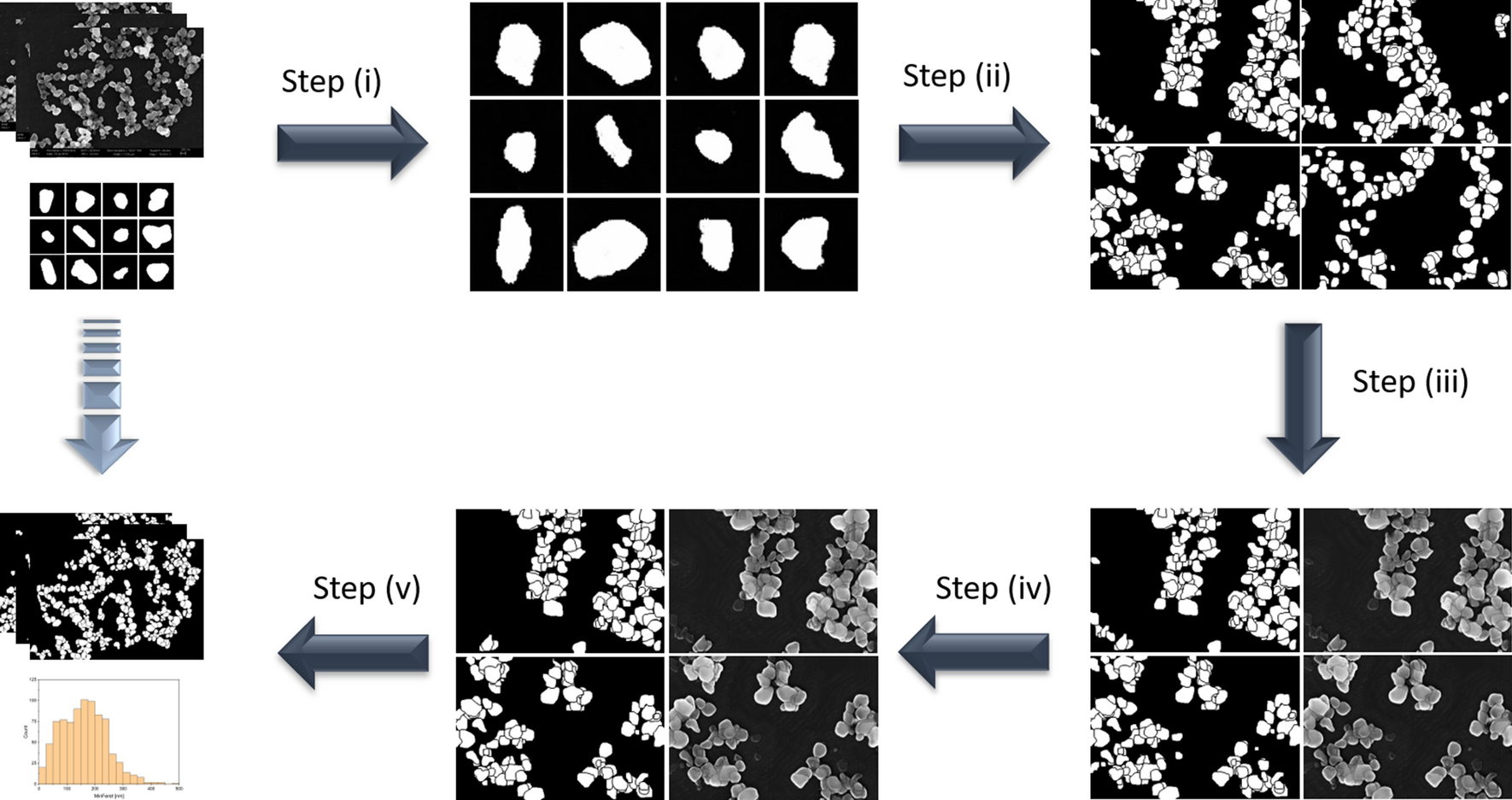

- #HOW TO CALCULATE PARTICLE DISTRIBUTION IN IMAGEJ SOFTWARE PATCH#
- #HOW TO CALCULATE PARTICLE DISTRIBUTION IN IMAGEJ SOFTWARE PLUS#
The term “small ice masses” collectively describes all perennial ice bodies at the Earth’s surface whose size is below the arbitrary threshold of 0.5 km 2 ( Leigh et al. 2021) and to a knowledge gap regarding their dynamics, their environmental effects, and their responses to short- and long-term climate fluctuations. Their exclusion from terrestrial cryosphere inventories and studies leads to a significant source of error, on the order of 10% in the total terrestrial ice volume ( Bahr and Radić 2012 Leigh et al. By contrast, smaller ice masses have received little scientific attention because until recently their detection by remote sensing was limited by the availability of aerial photographs or by the resolution of satellite imagery products, and field investigations were limited. Studies dealing with the terrestrial cryosphere have mainly considered medium-sized and large features such as ice sheets, ice caps, and glaciers. This results in a wide range of environmental and climatic effects, which have attracted increased attention to cryospheric features. In the Arctic, the long-term temperature trend shows a rapid rate of warming from 1990 to present, leading to major changes throughout the north polar cryosphere ( Post et al. The cryosphere includes the terrestrial, freshwater, and oceanic systems of the polar regions and plays a key role in the climate system through its influence on freshwater resources, gas fluxes, and regulation of energy at various scales ( Meredith et al.

#HOW TO CALCULATE PARTICLE DISTRIBUTION IN IMAGEJ SOFTWARE PLUS#
Le stade de vieillesse des plaques de glace et leur régénération rapide après les événements de fonte suggèrent leur résilience aux étés plus chauds actuels. Cette vieille glace a récemment été tronquée pendant les étés plus chauds entre 2008 et 2012, mais la plaque de glace a rapidement récupéré son volume pendant les étés plus frais. Une date radiocarbone de 3487 ± 20 cal BP suggère que les plaques de glace pourraient potentiellement remonter à l’Holocène tardif. Les propriétés distinctes de l’unité inférieure résultent probablement d’une longue période de croissance cinétique des cristaux de glace indiquant un âge minimum de plusieurs centaines d’années. Pour les deux unités, la formation de glace superposée à la base du manteau neigeux profond ressort comme le principal processus d’aggradation de la glace. En revanche, l’unité inférieure est étonnamment différente avec des cristaux grossiers, une porosité plus faible et une fréquence élevée de fractures. L'unité supérieure est caractérisée par une glace très fine, granuleuse et bouillonnante, avec une stratification oblique claire. Leurs résultats démontrent que les plaques de glace sont composées de deux unités distinctes. Les auteurs présentent de nouvelles connaissances sur la formation des plaques de glace dans les déserts polaires, basées sur les propriétés de la neige et de la glace à l'île Ward Hunt (Haut-Arctique canadien, 83°N). Les plaques de glace sont omniprésentes dans les régions polaires et constituent un élément clé de l’évolution du paysage. The old age of the ice patches and their rapid regeneration after melt events suggest their resilience to current warmer summers.
#HOW TO CALCULATE PARTICLE DISTRIBUTION IN IMAGEJ SOFTWARE PATCH#
This old ice was recently truncated during warmer summers between 20, but the ice patch quickly recovered its volume during cooler summers. A radiocarbon date of 3 487 ± 20 cal BP suggests that ice patches could potentially date back to the late Holocene. The distinct properties of the lower unit likely result from a long period of kinetic ice crystal growth indicating a minimum age of several hundred years. For both units, superimposed ice formation at the base of the deep snowpack stands out as the primary ice aggradation process. By contrast, the lower unit is strikingly different with coarse crystals, lower porosity, and a high frequency of fractures. The upper unit is characterized by very fine granular and bubbly ice with a clear oblique layering. Our results demonstrate that ice patches are composed of two distinct units. We present new insights into polar desert ice patch formation based on snow and ice properties at Ward Hunt Island (Canadian High Arctic, 83°N). Ice patches are ubiquitous in polar regions and are a key element for landscape evolution.


 0 kommentar(er)
0 kommentar(er)
